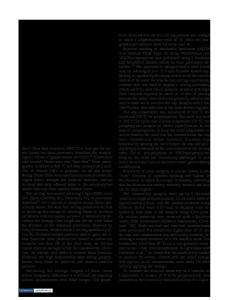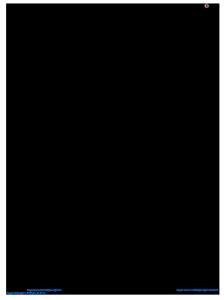Electromechanical Study of Carbon Fiber Composites
- PDF / 424,023 Bytes
- 6 Pages / 414.72 x 648 pts Page_size
- 3 Downloads / 372 Views
For
example, both fiber waviness (marcelling) and delamination affect the throughthickness resistivity of a continuous carbon fiber polymer-matrix composite laminate. Fiber waviness increases the chance that adjacent fiber layers touch, thereby decreasing the through-thickness resistivity. However, delamination increases this resistivity. The decoupling of these factors is difficult. Mechanical testing provides data on the mechanical behavior, but interpretation of the results in terms of the structure is complicated by the multiplicity of factors that affect the mechanical behavior. For example, both marcelling and fiber breakage decrease the tensile strength of a continuous fiber laminate along the fiber direction. To help alleviate this problem, this paper presents electromechanical testing, which involves simultaneous electrical and mechanical measurements on the same sample under load, in contrast to separate measurements in previous work [1,21. This paper illustrates the use of electromechanical testing in studying the fiber-matrix interface, the fiber residual stress and marcelling. FIBER-MATRIX INTERFACE The fiber-matrix interface is critical to a composite material. The bond strength and interfacial structure are related. The desirable interfacial phase depends on the origin of bonding, but interfacial voids are undesirable. The bond 43 Mat. Res. Soc. Symp. Proc. Vol. 500 ©1998 Materials Research Society
strength is commonly determined under shear by single fiber pull-out testing, in which a single fiber is embedded at one end in the matrix and then pulled out. This technique does not provide information on the interfacial structure. It also suffers from the large data scatter, which stems from variation in interface cleanliness. This problem can be alleviated by measuring both bond strength and contact resistivity for each interface sample and seeing how these two quantities correlate among samples that are identically prepared. The sense of the correlation provides information on the origin of bonding. Decrease of the contact resistivity with increasing bond strength means that interfacial voids govern the bond strength; a higher void content causes the contact resistivity to increase and causes the bond strength to decrease. Increase of the contact resistivity with increasing bond strength means that an interfacial phase of high volume resistivity helps the bonding. A change in interfacial structure, as caused by surface treatment of the fiber or by
change in composition of the matrix, causes the curve of contact resistivity vs. bond strength to shift. By observing the shift, even a small change in bond strength resulting from the change in interfacial structure can be discerned. This technique [3] is illustrated below for the interface between carbon fiber and cement matrix. The fibers were isotropic pitch based, unsized and of diameter 15±3 pm, from Ashland Petroleum Co. (Ashland, KY). Fiber surface treatment involved exposure to 03 gas (0.6 vol.%, in 02) at 160'C for 5 min. Portland cement (Type
Data Loading...










